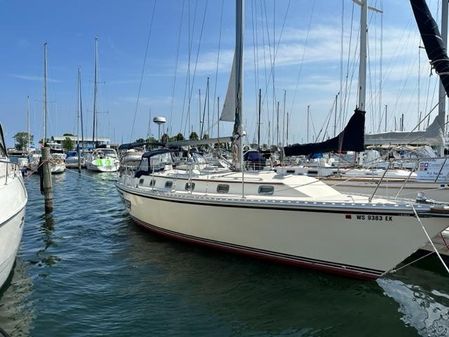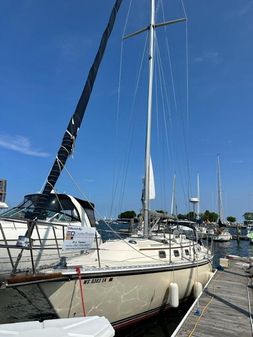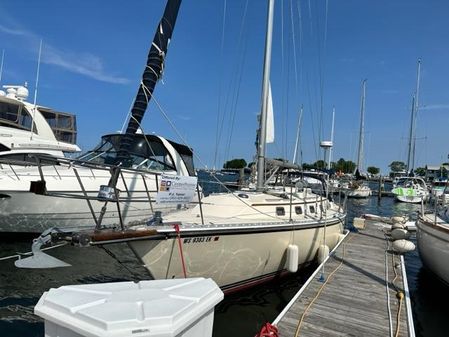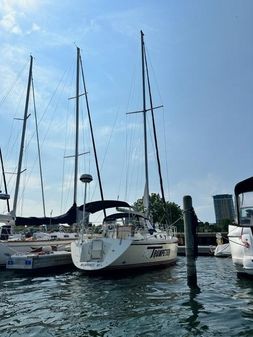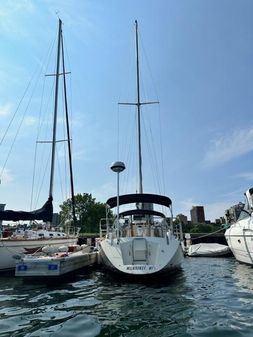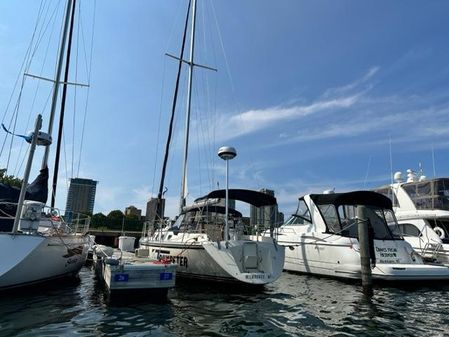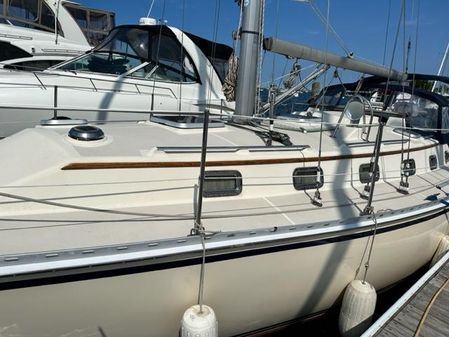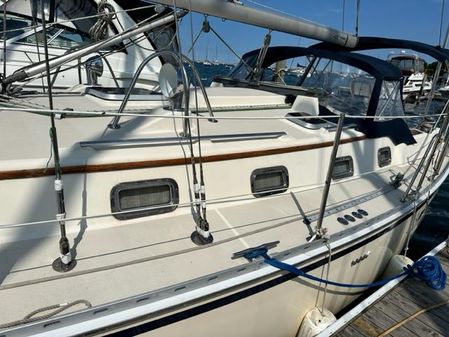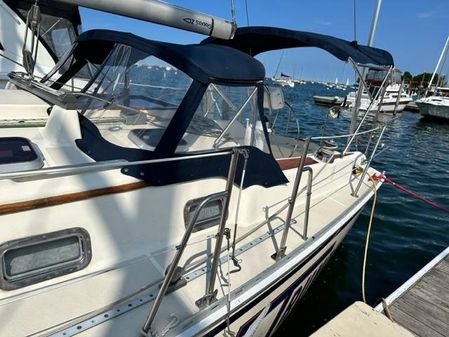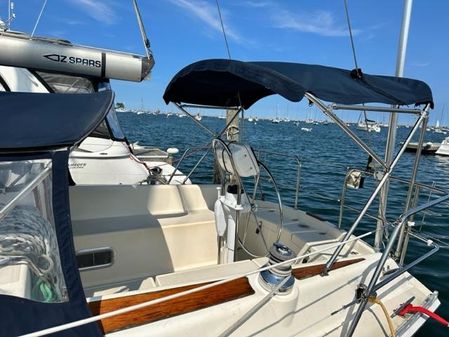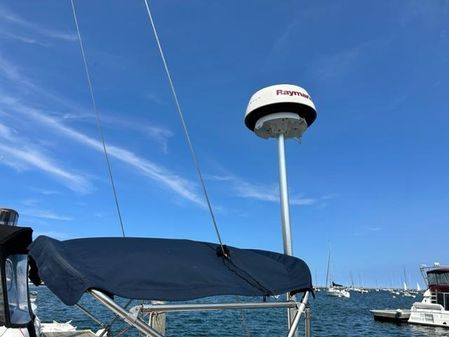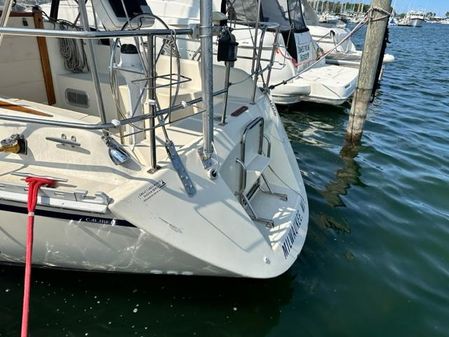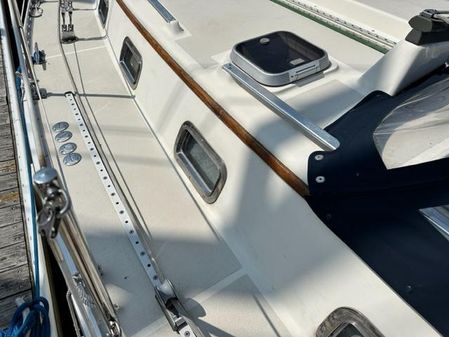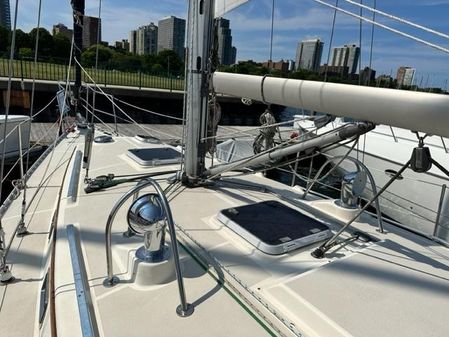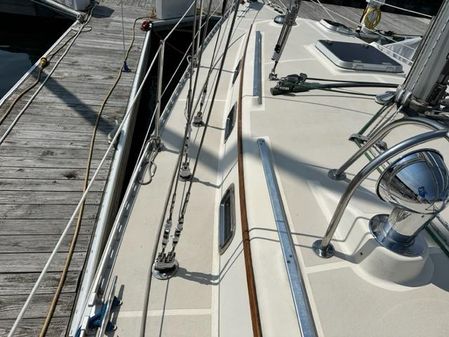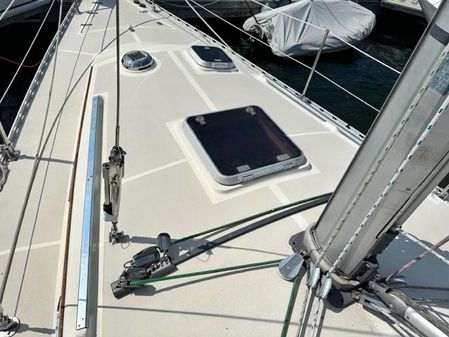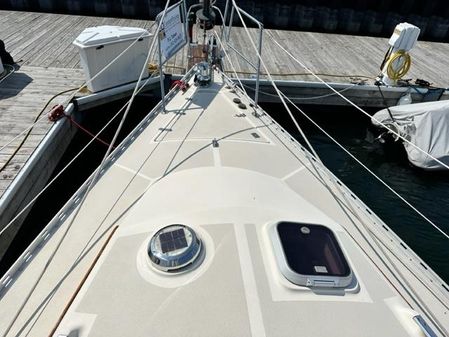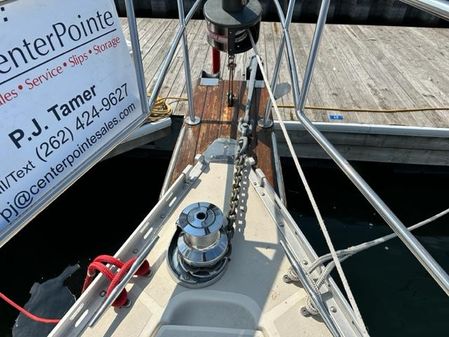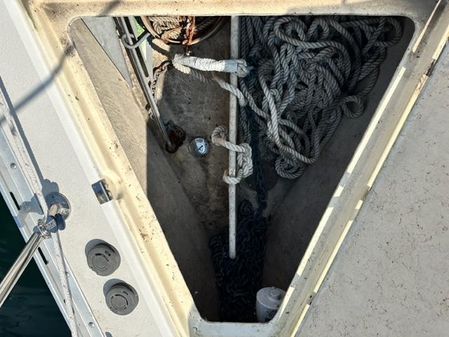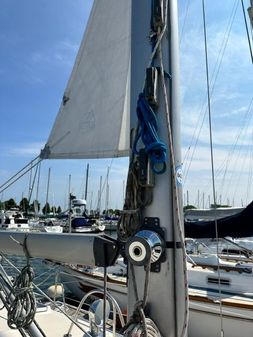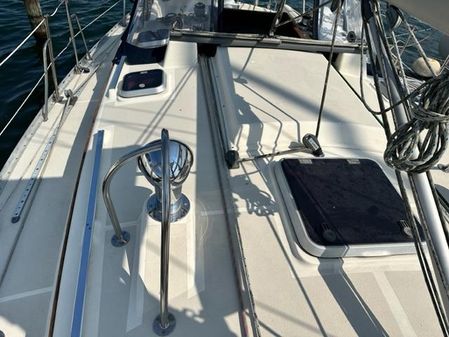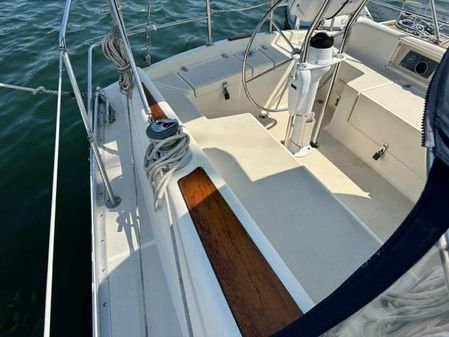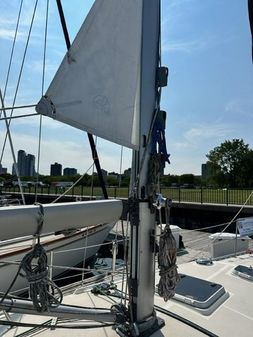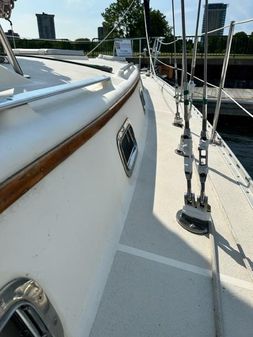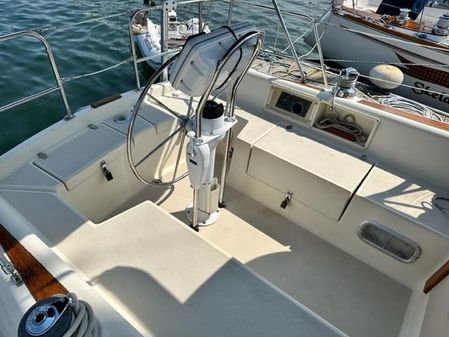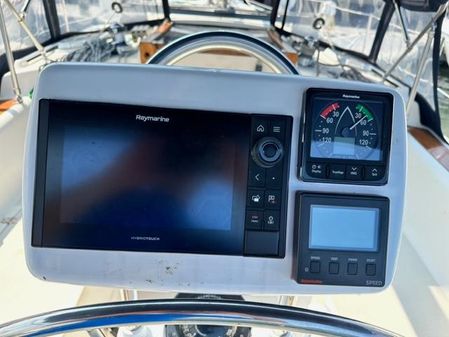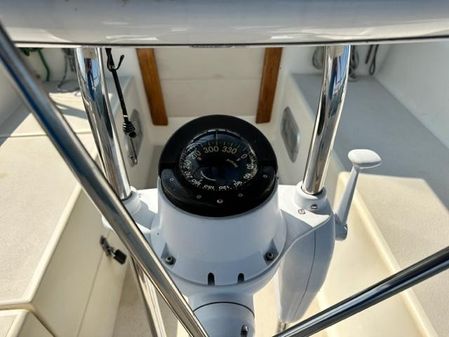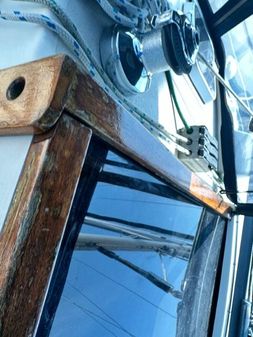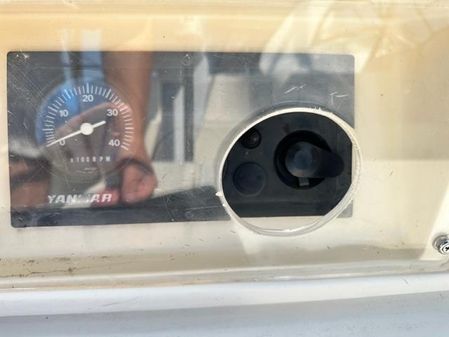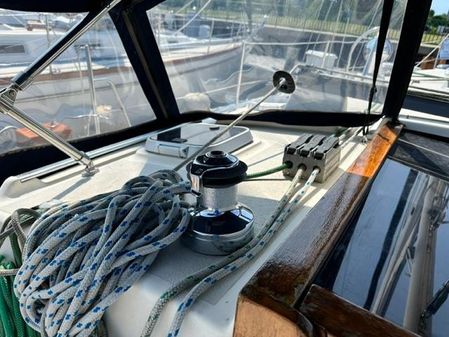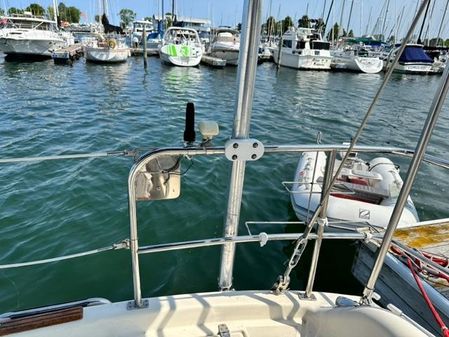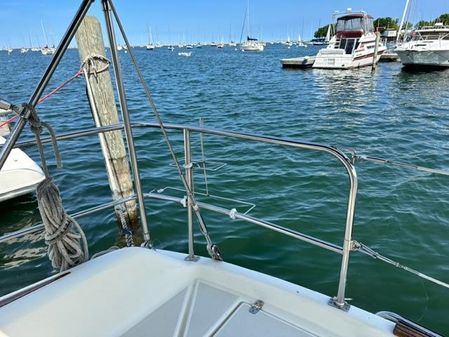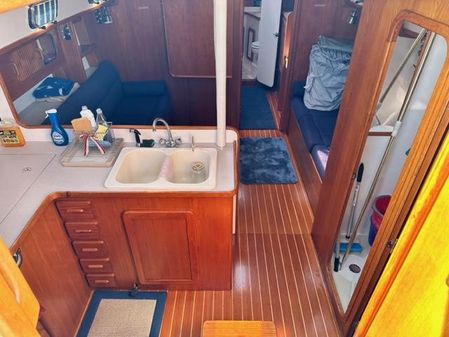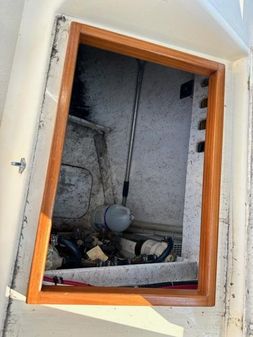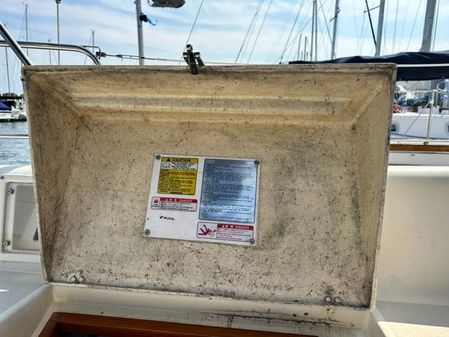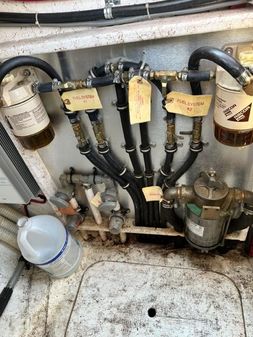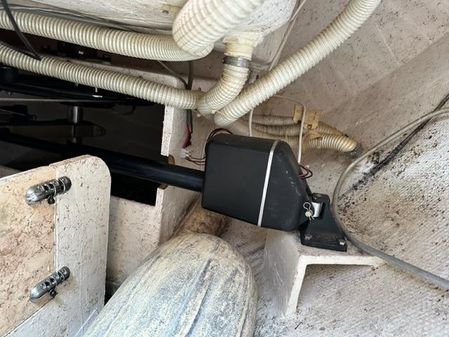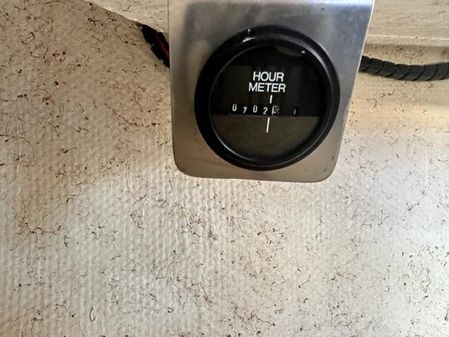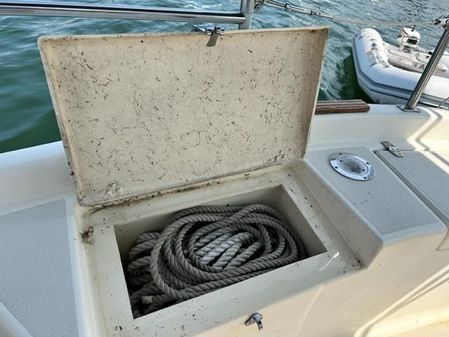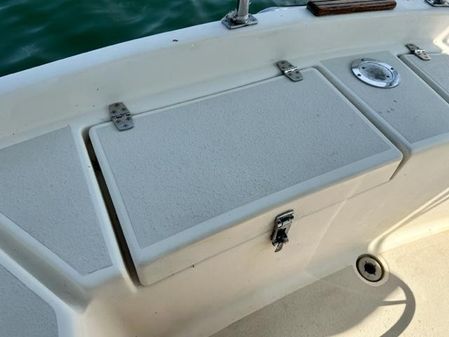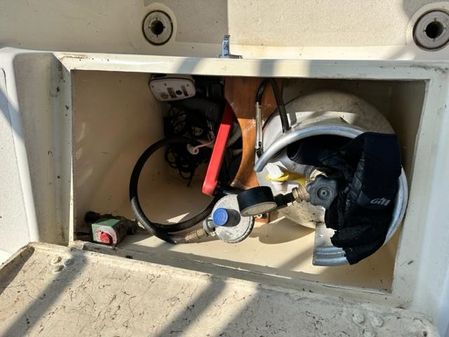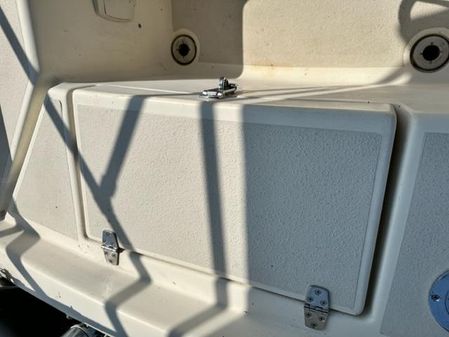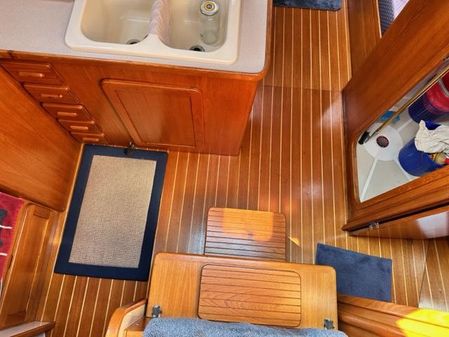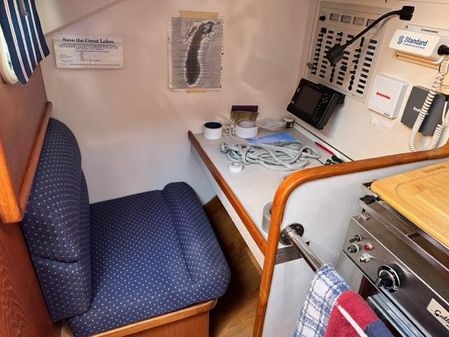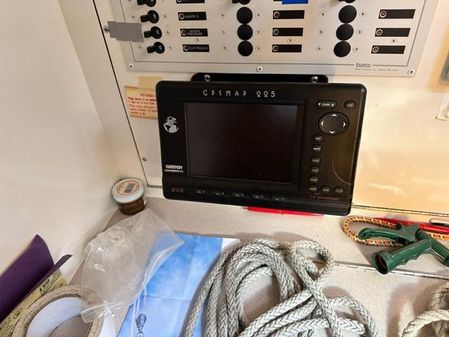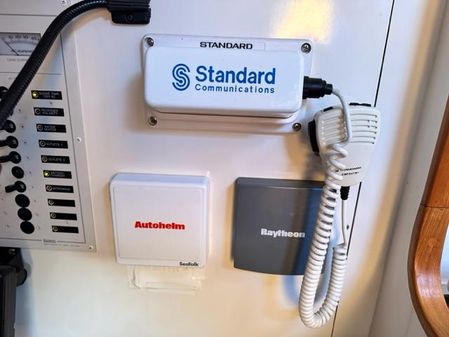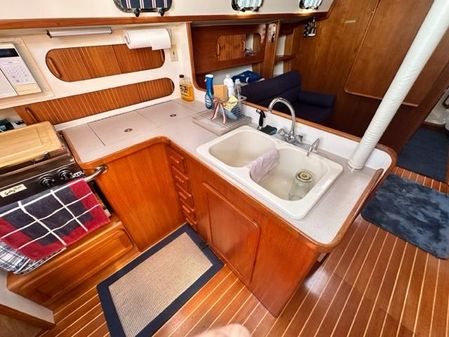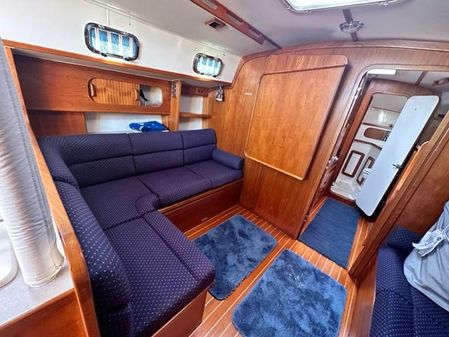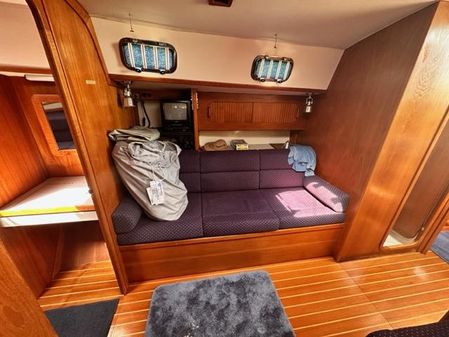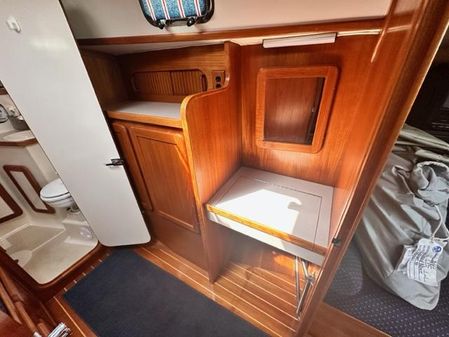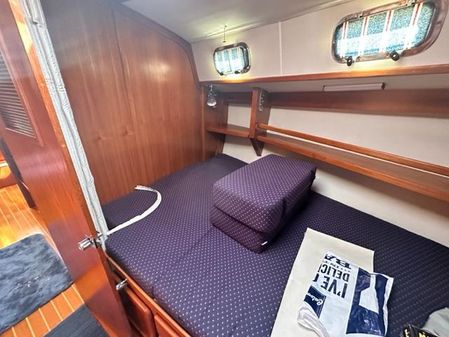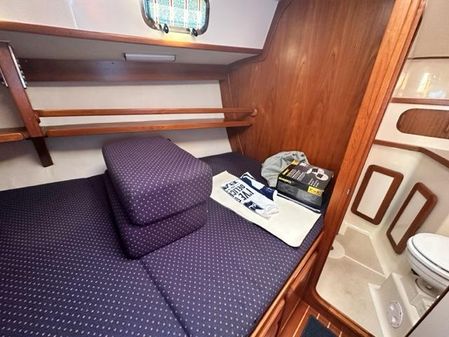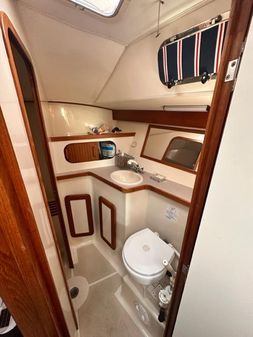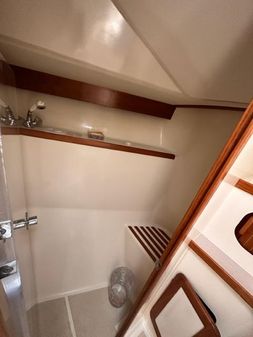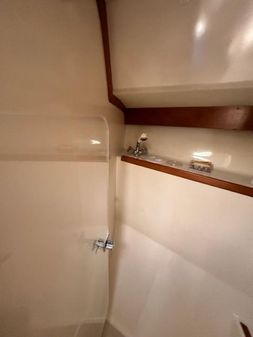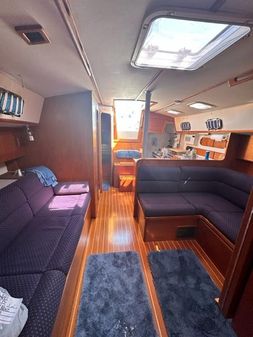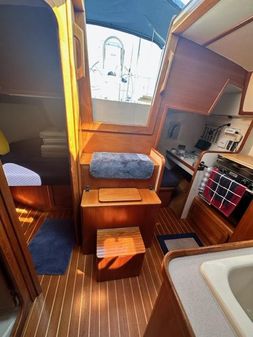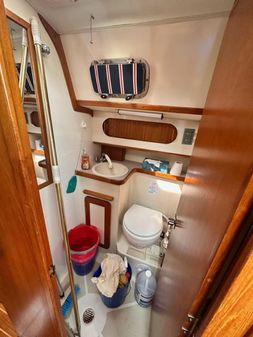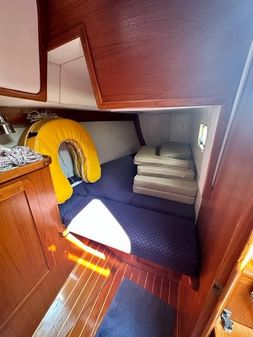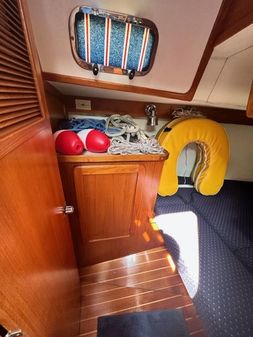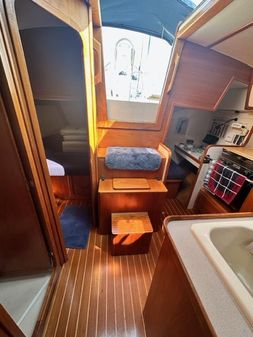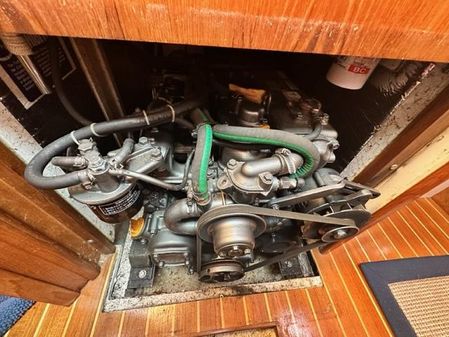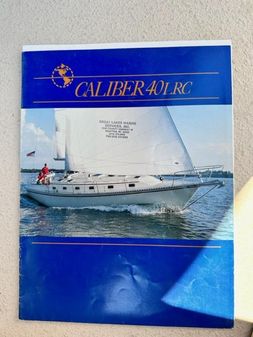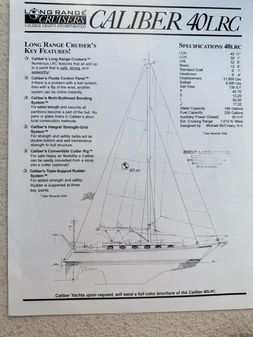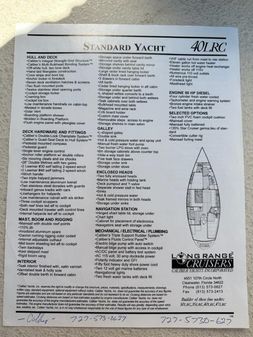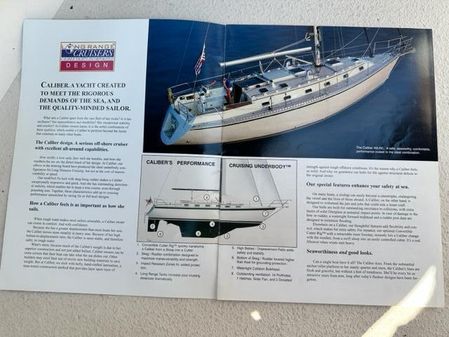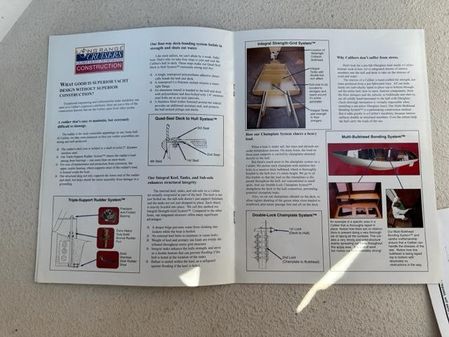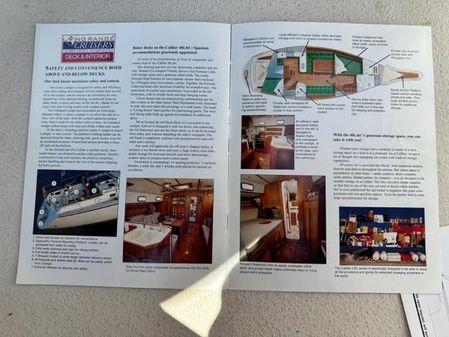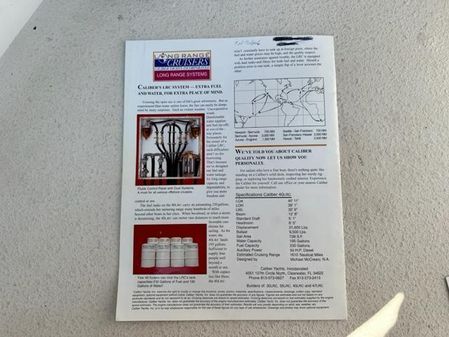Basic Boat Info
Make: Caliber
Model: 40 LRC
Year: 1998
Condition: Used
Category: Sail
Construction: Fiberglass
Boat Hull ID: CYQ40102I798
Has Hull ID: Yes
Keel Type: Other Keel
Range: 1610 mi
Dimensions
Length: 40 ft
Length Overall: 40'11 ft
Waterline Length: 32'6 ft
Beam: 12'8 ft
Max Draft: 5'1 ft
Displacement: 21,600 lb
Ballast: 9500 lb
Cabins Count: 2
Engines / Speed
Engines: 1
- Make: Yanmar
- Model: 4JH2E
- Fuel: Diesel
- Engine Power: 50hp
- Type: Inboard
- Drive Type: Direct
- Year: 1998
- Engine Hours: 703
Tanks
Fuel Tanks: 1
Fuel Tank Capacity: 230 gal
Water Tanks: 1
Water Tank Capacity: 195 gal
Holding Tank Count: 2
Holding Tank Capacity: 60 gal
Other
Heads Count: 2
Drive Type: Direct
Boat Class: Motorsailers, Cruisers, Sloop
Contact
PJ Tamer CPYB
CenterPointe Yacht Sales
Office
CenterPointe Yacht Sales
700 S. Water Street
Milwaukee, WI, US, 53204
Tel:414-273-0711
700 S. Water Street
Milwaukee, WI, US, 53204
Tel:414-273-0711
Disclaimer
The Company offers the details of this vessel in good faith but cannot guarantee or warrant the accuracy of this information nor warrant the condition of the vessel. A buyer should instruct his agents, or his surveyors, to investigate such details as the buyer desires validated. This vessel is offered subject to prior sale, price change, or withdrawal without notice.
The Company offers the details of this vessel in good faith but cannot guarantee or warrant the accuracy of this information nor warrant the condition of the vessel. A buyer should instruct his agents, or his surveyors, to investigate such details as the buyer desires validated. This vessel is offered subject to prior sale, price change, or withdrawal without notice.
Review and additional info
Michael McCreary designed the 40 LRC, which is most often compared to an Island Packet.
It has a relatively fine entry, bowsprit and bobstay, straight sheer, reverse transom, and flat coachroof. The displacement/length ratio is a moderately hefty 281, indicating it has the hull volume to carry necessary cruising stores. Ballast of 9,500 lbs. is 44% of displacement. McCreary says its limit of positive stability is 138°, well in excess of the 120 figure many consider minimum for offshore sailing. The underbody shows a long cruising fin; you could also call it a full keel with a cutaway forefoot and a monster Brewer bite. The rudder is skeg-mounted for protection and tracking. Shrouds are led to chainplates mounted inboard of the toerail, and the genoa track is close to the cabin for narrow sheeting angles. McCreary claims the boat tacks through 85°-90°
Sail area is 739 sq. ft., with a sail area/displacement (SA/D) of 15.3
Construction
Hand lay-up of the solid glass hull begins with molds sprayed with isophthalic-neopentyl gelcoat, followed by a skin layer of .75-oz. split-strand fiberglass set in vinylester resin to prevent blistering. The keel shape is part of the hull mold with a cavity for the iron and concrete ballast that is glassed over. Though no molded liners or pans are used except in the heads (an appropriate application to deal with moisture from showers and toilet leaks), the hull is stiffened by the bonding in of a molded Integral Strength-Grid System that incorporates water and two fuel tanks. The deck is cored with Marine Tech plywood cut into 2-7/8'' squares bedded in alternating layers of 1.5-oz. mat and 24-oz. roving. McCreary says that wood is used because it resists compression when deck hardware is installed, which he considers a shortcoming of balsa and foam cores. (Many builders using balsa or foam omit it where hardware is to be installed, and use wood or solid resin/glass.) Extra layers of glass are laminated around the perimeter of the cabin and cockpit, and radiuses are reinforced with 18-oz. Fabmat. The Quad-Seal Deck to Hull System? is sturdy and well done. The deck and hull flanges are bonded with 3M 5200. The inside seam is bonded with copolymer tape. An L-shaped aluminum toerail covers the exterior seam; it is also bonded with 3M 5200 and fastened with stainless steel carriage bolts on 6'' centers. A stainless rubrail covers the seam between toerail and hull. Caliber seems to have a name for everything, including conventional bonding of bulkheads to the hull. Caliber calls its method The Multi-Bulkhead Bonding System?. Furniture and cabinetry are bonded in the same manner. A built-up plywood interior bonded to the hull and deck is in many ways preferable to a one-piece fiberglass pan interior. Chainplates are through-bolted to bulkheads as well as the deck. Caliber calls it the Double-Lock Chainplate System.
Caliber 40 LRC
The molded rudder is constructed of a stainless steel plate welded to a 2? diameter stainless steel stock encapsulated in fiberglass. When released from the mold, fiberglass tape is laid over the seam to prevent leaks, and the appendage is then faired and sprayed with gelcoat.
Loads on the rudderstock are handled by three supports: a solid stainless steel shoe attached to the bottom of the skeg, a bronze stuffing box at the waterline, and an upper bearing.
Deck
The T-shaped cockpit is comfortable, with 7' 6'' seats and high backrests.
A port lazarette is 32'' deep and has a 16'' wide shelf and scallops for organizing spare lines. It also provides access to the aft end of the engine, batteries, and steering controls.
Other features include an ice chest and vented propane locker with room for two 10-lb. bottles.
The transom platform has a built-in swim ladder.
For sail handling, two-speed Lewmar 48 winches are located on the coaming within reach of the helmsman, but the mainsheet traveler, mounted on the coachroof, requires a shorthanded sailor to leave the helm to trim the main. Two Lewmar 30s are mounted on the cabin top with triple rope clutches for sail control lines.
The untapered Selden mast has single spreaders.
Caliber 40 LRC
The headstay and upper shrouds are 3/8''; the backstay and lower shrouds are 5/16?. The split backstay eases boarding but a single backstay would allow for an integral adjuster to control sail shape.
With wide decks, lifelines, handrails and slotted toerail, movement about the boat is easy and safe.
A double-roller stainless steel bowsprit moves ground tackle well forward of the stem and furling gear. The split anchor locker on our test boat carried a 30-kg Bruce, 200' of chain and 200? of rode in one compartment, and a 25-lb. Danforth and rode in the other.
Accommodations
Joinerwork is nicely done; the 40 LRC looks like a traditional cruising boat, teak and holly sole, teak hull liners and bulkheads.
Headroom is 6' 2'' throughout.
The master stateroom forward has an offset double berth measuring 6' 4'' x 4' 4''. It's a nice change from the usual V-berth, though the person sleeping outboard has to climb over his or her partner to get out.
We like the head in the bow, but it won't be as comfortable to use at sea as the aft head. There is a separate shower stall.
The L-shaped dinette settee to port is 6' 2'' long, and converts to a double berth. The starboard settee is 6?. The dinette table folds down from the bulkhead.
In the galley, the fiberglass sink is located on centerline, where it should be to prevent water from flooding through the drain. The stove/oven is Force 10 and there's room for a microwave. The 11 cu. ft. top loading icebox drains into a sump pump box at the mast step.
The nav station is aft of the galley. The navigator faces a large electrical and instrument panel outboard and communicates with the helmsman by opening a port beside his seat.
To starboard is what McCreary calls a day head, with doors from the saloon or aft berth. The head measures 42'' x 36'' and has a toilet, sink and a shower; one dealer referred to it as a telephone booth.
The aft stateroom berth measures 6' 7''x 4' 4''. There's a cedar-lined hanging locker. Storage space below the berth is shared with an 11-gallon water heater.
Access to wiring, plumbing, through-hulls and tank inspection ports throughout the boat are from inside cabinets or behind fascias.
The top step on the companionway ladder opens to provide access to the top of engine; if desired, the entire ladder/box can be removed.
Michael McCreary designed the 40 LRC, which is most often compared to an Island Packet.
It has a relatively fine entry, bowsprit and bobstay, straight sheer, reverse transom, and flat coachroof. The displacement/length ratio is a moderately hefty 281, indicating it has the hull volume to carry necessary cruising stores. Ballast of 9,500 lbs. is 44% of displacement. McCreary says its limit of positive stability is 138°, well in excess of the 120 figure many consider minimum for offshore sailing. The underbody shows a long cruising fin; you could also call it a full keel with a cutaway forefoot and a monster Brewer bite. The rudder is skeg-mounted for protection and tracking. Shrouds are led to chainplates mounted inboard of the toerail, and the genoa track is close to the cabin for narrow sheeting angles. McCreary claims the boat tacks through 85°-90°
Sail area is 739 sq. ft., with a sail area/displacement (SA/D) of 15.3
Construction
Hand lay-up of the solid glass hull begins with molds sprayed with isophthalic-neopentyl gelcoat, followed by a skin layer of .75-oz. split-strand fiberglass set in vinylester resin to prevent blistering. The keel shape is part of the hull mold with a cavity for the iron and concrete ballast that is glassed over. Though no molded liners or pans are used except in the heads (an appropriate application to deal with moisture from showers and toilet leaks), the hull is stiffened by the bonding in of a molded Integral Strength-Grid System that incorporates water and two fuel tanks. The deck is cored with Marine Tech plywood cut into 2-7/8'' squares bedded in alternating layers of 1.5-oz. mat and 24-oz. roving. McCreary says that wood is used because it resists compression when deck hardware is installed, which he considers a shortcoming of balsa and foam cores. (Many builders using balsa or foam omit it where hardware is to be installed, and use wood or solid resin/glass.) Extra layers of glass are laminated around the perimeter of the cabin and cockpit, and radiuses are reinforced with 18-oz. Fabmat. The Quad-Seal Deck to Hull System? is sturdy and well done. The deck and hull flanges are bonded with 3M 5200. The inside seam is bonded with copolymer tape. An L-shaped aluminum toerail covers the exterior seam; it is also bonded with 3M 5200 and fastened with stainless steel carriage bolts on 6'' centers. A stainless rubrail covers the seam between toerail and hull. Caliber seems to have a name for everything, including conventional bonding of bulkheads to the hull. Caliber calls its method The Multi-Bulkhead Bonding System?. Furniture and cabinetry are bonded in the same manner. A built-up plywood interior bonded to the hull and deck is in many ways preferable to a one-piece fiberglass pan interior. Chainplates are through-bolted to bulkheads as well as the deck. Caliber calls it the Double-Lock Chainplate System.
Caliber 40 LRC
The molded rudder is constructed of a stainless steel plate welded to a 2? diameter stainless steel stock encapsulated in fiberglass. When released from the mold, fiberglass tape is laid over the seam to prevent leaks, and the appendage is then faired and sprayed with gelcoat.
Loads on the rudderstock are handled by three supports: a solid stainless steel shoe attached to the bottom of the skeg, a bronze stuffing box at the waterline, and an upper bearing.
Deck
The T-shaped cockpit is comfortable, with 7' 6'' seats and high backrests.
A port lazarette is 32'' deep and has a 16'' wide shelf and scallops for organizing spare lines. It also provides access to the aft end of the engine, batteries, and steering controls.
Other features include an ice chest and vented propane locker with room for two 10-lb. bottles.
The transom platform has a built-in swim ladder.
For sail handling, two-speed Lewmar 48 winches are located on the coaming within reach of the helmsman, but the mainsheet traveler, mounted on the coachroof, requires a shorthanded sailor to leave the helm to trim the main. Two Lewmar 30s are mounted on the cabin top with triple rope clutches for sail control lines.
The untapered Selden mast has single spreaders.
Caliber 40 LRC
The headstay and upper shrouds are 3/8''; the backstay and lower shrouds are 5/16?. The split backstay eases boarding but a single backstay would allow for an integral adjuster to control sail shape.
With wide decks, lifelines, handrails and slotted toerail, movement about the boat is easy and safe.
A double-roller stainless steel bowsprit moves ground tackle well forward of the stem and furling gear. The split anchor locker on our test boat carried a 30-kg Bruce, 200' of chain and 200? of rode in one compartment, and a 25-lb. Danforth and rode in the other.
Accommodations
Joinerwork is nicely done; the 40 LRC looks like a traditional cruising boat, teak and holly sole, teak hull liners and bulkheads.
Headroom is 6' 2'' throughout.
The master stateroom forward has an offset double berth measuring 6' 4'' x 4' 4''. It's a nice change from the usual V-berth, though the person sleeping outboard has to climb over his or her partner to get out.
We like the head in the bow, but it won't be as comfortable to use at sea as the aft head. There is a separate shower stall.
The L-shaped dinette settee to port is 6' 2'' long, and converts to a double berth. The starboard settee is 6?. The dinette table folds down from the bulkhead.
In the galley, the fiberglass sink is located on centerline, where it should be to prevent water from flooding through the drain. The stove/oven is Force 10 and there's room for a microwave. The 11 cu. ft. top loading icebox drains into a sump pump box at the mast step.
The nav station is aft of the galley. The navigator faces a large electrical and instrument panel outboard and communicates with the helmsman by opening a port beside his seat.
To starboard is what McCreary calls a day head, with doors from the saloon or aft berth. The head measures 42'' x 36'' and has a toilet, sink and a shower; one dealer referred to it as a telephone booth.
The aft stateroom berth measures 6' 7''x 4' 4''. There's a cedar-lined hanging locker. Storage space below the berth is shared with an 11-gallon water heater.
Access to wiring, plumbing, through-hulls and tank inspection ports throughout the boat are from inside cabinets or behind fascias.
The top step on the companionway ladder opens to provide access to the top of engine; if desired, the entire ladder/box can be removed.
Disclaimer
The Company offers the details of this vessel in good faith but cannot guarantee or warrant the accuracy of this information nor warrant the condition of the vessel. A buyer should instruct his agents, or his surveyors, to investigate such details as the buyer desires validated. This vessel is offered subject to prior sale, price change, or withdrawal without notice.
The Company offers the details of this vessel in good faith but cannot guarantee or warrant the accuracy of this information nor warrant the condition of the vessel. A buyer should instruct his agents, or his surveyors, to investigate such details as the buyer desires validated. This vessel is offered subject to prior sale, price change, or withdrawal without notice.
Additional Units Included
- 1998 Cradle Trailer

